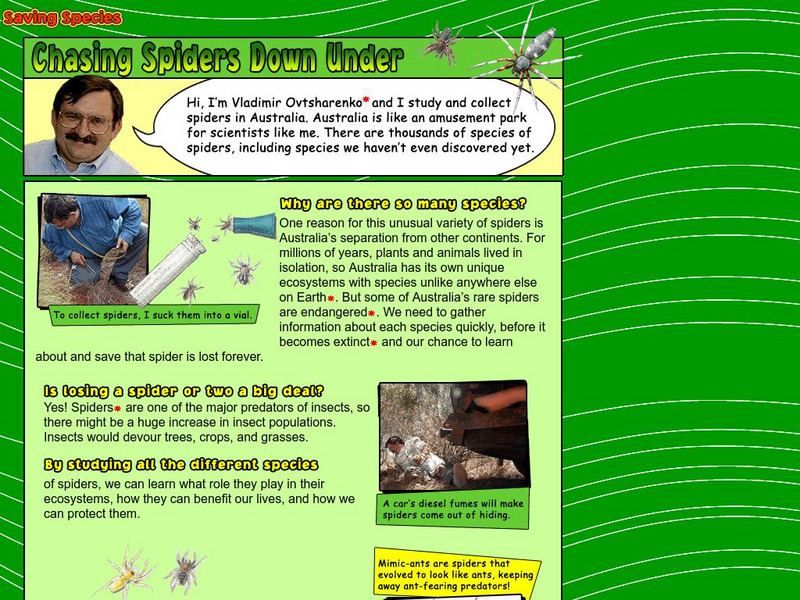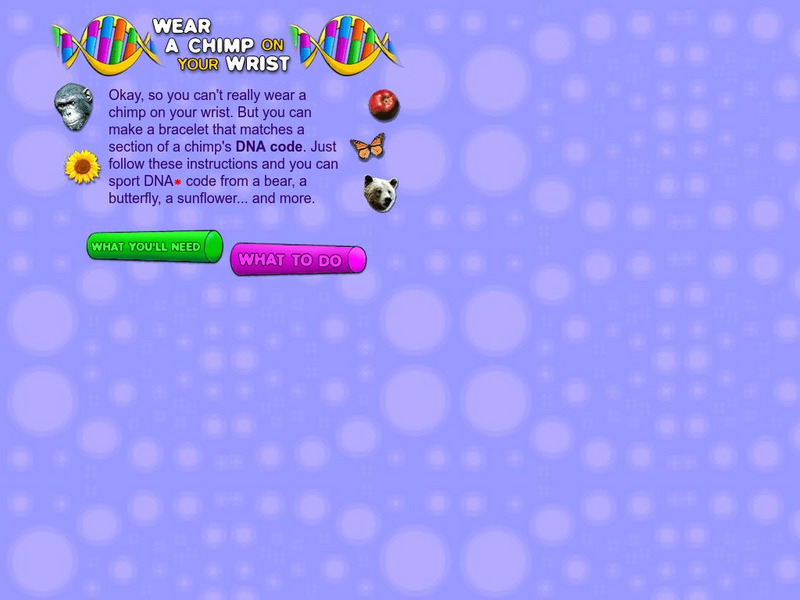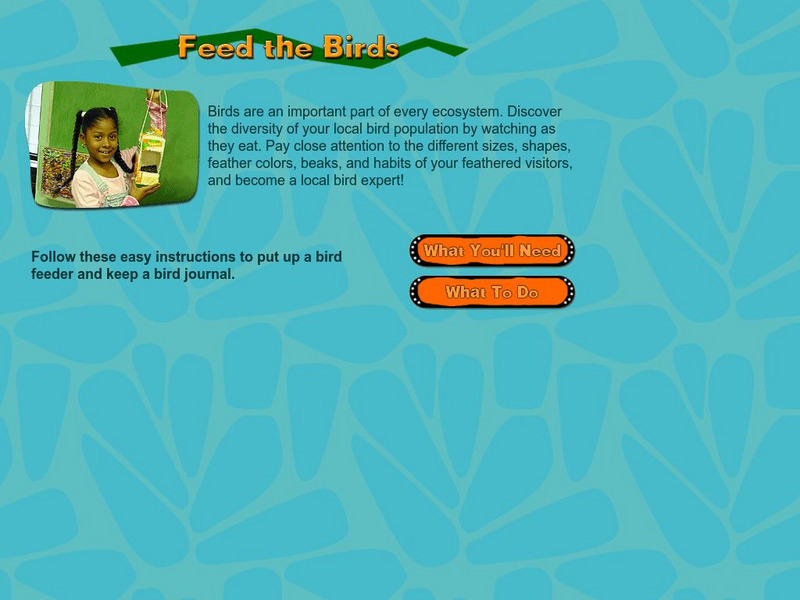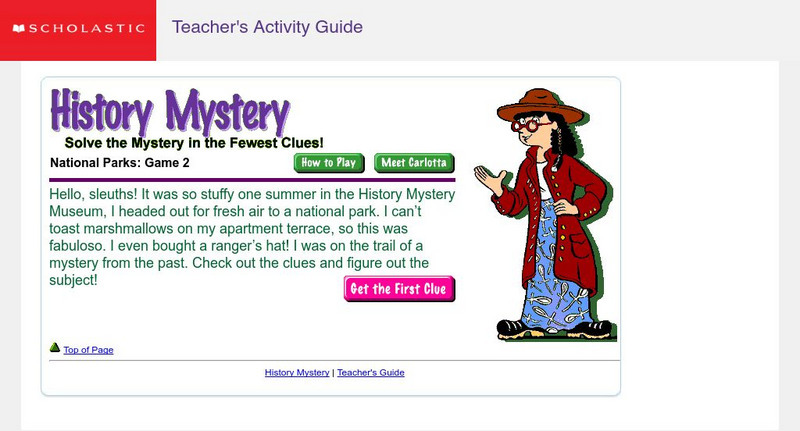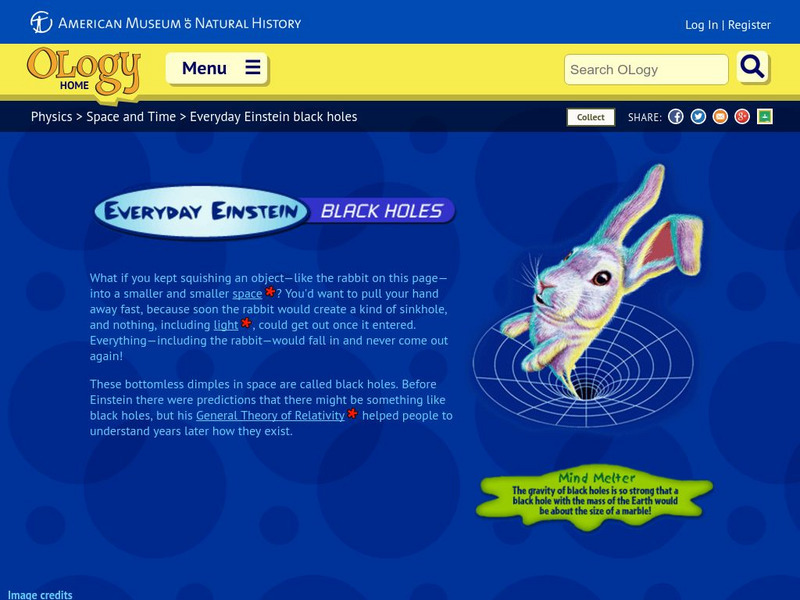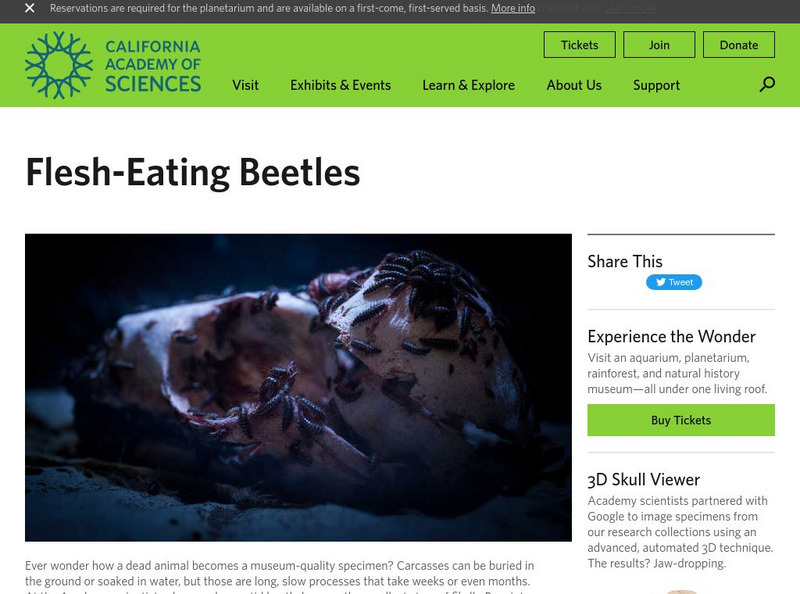American Museum of Natural History
American Museum of Natural History: O Logy: Bahamas: Creatures of the Reefs
Biologist Paula Mikkelsen, who studies mollusks among the coral reefs in the beautiful waters of the Bahamas, explains her work.
American Museum of Natural History
American Museum of Natural History: O Logy: Chasing Spiders Down Under
Naturalist Vladimir Ovtsharenko explains why Australia is home to so many different species of spiders, why spiders are important, and why spiders should be protected.
American Museum of Natural History
American Museum of Natural History: O Logy: Stuff to Do: Wear a Chimp
Illustrated instructions for a constructing bracelet from a section of the DNA code for a chimp, a sunflower, a grizzly, the human heart, or any one of six other plants or animals.
American Museum of Natural History
American Museum of Natural History: O Logy: Stuff to Do: Feed the Birds
Instructions for building a bird feeder and for keeping a journal of observations about the birds that come to feed.
American Museum of Natural History
American Museum of Natural History: Ology: Endangered!
After making the gameboard, play this interactive learning game that teaches about "The Endangered Species Act", a law that protects animals and plants that are in danger of going extinct.
American Museum of Natural History
American Museum of Natural History: O Logy: Stuff to Do: Draw a Monarch Butterfly
Learn how to make a scientific illustration of a monarch butterfly in several easy steps.
American Museum of Natural History
American Museum of Natural History: Meet the Universe's Main Attraction Gravity
Illustrated and animated series of short articles answers the questions, what is gravity? and what does it do?
American Museum of Natural History
American Museum of Natural History: O Logy: What Is the Greenhouse Effect?
An illustrated explanation of the greenhouse effect.
American Museum of Natural History
American Museum of Natural History: O Logy: Stuff to Do: Build the Big Dipper
Illustrated instructions for building a Big Dipper mobile.
University of California
Ucmp: Glossary of Natural History
A glossary of useful terms, including "abyssal plain" and related terms.
University of Oregon
Museum of Natural and Cultural History: Rocks and Minerals: Everyday Uses
Click on the shelves in this virtual exhibition to learn about the many rocks and minerals that we use in our everyday lives.
Smithsonian Institution
National Museum of Natural History: Relative Dating in Archaeology [Pdf]
Activities for the classroom that teach about stratigraphy and seriation, two methods used in the relative dating of objects in archaeology.
The British Museum
British Museum: Egyptian Life
Students learn about a day in the life of two ancient Egyptian families. They also explore paintings to learn more about the life of a wealthy nobleman in ancient Egypt. Afterwards, they can play Senet, a popular Egyptian game.
Scholastic
Scholastic History Mystery: National Parks 2: The General Sherman Tree
Students try to guess the mystery subject Carlotta Facts, the History Mystery Museum's professor, is studying. They read the clues, do some online and offline research, and then attempt to identify the game's mystery subject, the General...
Alabama Learning Exchange
Alex: Wandering Alabama
This lesson is a fun fact gathering mission! Alabama is rich in history, museums, natural and manmade attractions, and some just plain wacky attractions. Students will work in collaborative groups to create a guide to sites in Alabama...
American Museum of Natural History
American Museum of Natural History: O Logy: A Sea of Questions About Mangroves
An engaging piece featuring questions that scientists ask when they are researching the seas. Click on the red asterisks and discover even more information!
Carnegie Museum of Natural History
Carnegie Museum of Natural History: Lewis and Clark
This resource describes how Lewis and Clark described various animals two centuries ago.
American Museum of Natural History
American Museum of Natural History: O Logy: Black Holes
This is a brief explanation of black holes. Click the starred words to see interactive flashcards with more information.
Read Works
Read Works: Meet the Ologist Chuck Spencer
[Free Registration/Login Required] This ReadWorks reading from the American Museum of Natural Anthropology's website called OLogy provides an interview with the archaeologist named Chuck Spencer. A paired passage entitled "Up Close with...
Read Works
Read Works:what's the Big Idea About Archaeology?
[Free Registration/Login Required] This ReadWorks reading from the American Museum of Natural Anthropology's website called OLogy explains what archaeologists do. A paired passage entitled "Meet the Ologist-Chuck Spencer" is provided in...
Read Works
Read Works: Field Trip
[Free Registration/Login Required] A literary text about a boy named Jeremy who got sick on the day he class was going on a field trip. A question sheet is available to help students build skills in reading comprehension.
California Academy of Sciences
California Academy of Sciences: Flesh Eating Beetles!
Get the gory low-down of flesh-eating beetles and find out how they are put to work in natural history museums.
University of Oxford (UK)
Oxford University Museum of Natural History: Insects
Flies, fleas, beetles and bees are all insects, and the study of insects is called entomology. Insects are probably the most important group of animals on earth - there may be as many as ten million different types of insect alive today!...
Read Works
Read Works: Face to Fossil
[Free Registration/Login Required] This seven-page PDF passage entitled "Face to Fossil" features an interview with ProtoAndy, a fossil of Protoceratops. It is part of a Paired Text with two other texts (see links above passage):...

